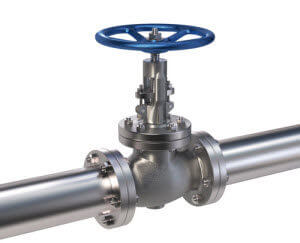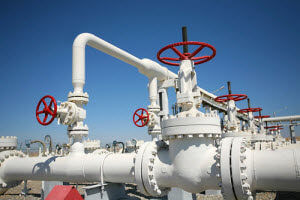The Difference Between Normally Closed Valves and Normally Open Valves
Normally closed and normally open are often used to describe various types of valves, specifically two-port valves. Based on each term, it’s easy to understand that the biggest difference between normally closed valves and normally open valves is how they operate. However, what are the applications for each type of valve and what benefits do they present?
Normally Closed Valves
 Normally closed valves are designed to block flow through the valve and are commonly used for emergency safety. During usual operation, these devices use a spring to remain closed. The valve will open when the system begins to experience overpressure to ensure safety. Once pressure begins to normalize, it will automatically close.
Normally closed valves are designed to block flow through the valve and are commonly used for emergency safety. During usual operation, these devices use a spring to remain closed. The valve will open when the system begins to experience overpressure to ensure safety. Once pressure begins to normalize, it will automatically close.
Solenoid valves can also be normally closed. A solenoid valve is an electromechanical device that controls the flow of liquid or gas through a system. Normally closed solenoid valves include a plunger that remains in a closed position when the system is running smoothly, like pressure relief valves.
Normally closed solenoid valves also include a coil that, when powered, will cause the plunger to open and allow liquid or gas to pass through the valve.
Normally Open Valves
Normally open valves are also used as safety devices. However, unlike normally closed valves, these parts work to maintain low pressure in a system. Normally open valves are designed to allow liquid or gas to flow through in usual circumstances. As the system builds pressure, they will begin to shut in order reduce and regulate pressure levels. In some extreme overpressure situations, they will close almost entirely.
 There are normally open solenoid valves as well. These devices will remain open until power is sent to the coil and signals the plunger to close.
There are normally open solenoid valves as well. These devices will remain open until power is sent to the coil and signals the plunger to close.
3-Port Valves
Normally closed and normally open valves are available in 3-port configurations as well. These contain a pressure port, an exhaust port, and a cylinder port and work differently than the two-port valves listed above.
For example, when the coil in a normally closed 3-port solenoid valve is not energized, the pressure port remains closed, preventing flow through the valve, and the exhaust port stays connected to the cylinder port. However, when it is powered, the pressure port opens and connects to the cylinder port while the exhaust port closes.
Normally open solenoid valves are the opposite. In usual operation, the pressure port connects to the cylinder port and the exhaust port is closed. When energized, the exhaust port connects to the cylinder port and the pressure port closes.
The difference between normally closed valves and normally open valves is not just in how they operate. Each type also has different applications and benefits that you must consider to ensure that you choose the right valve.
